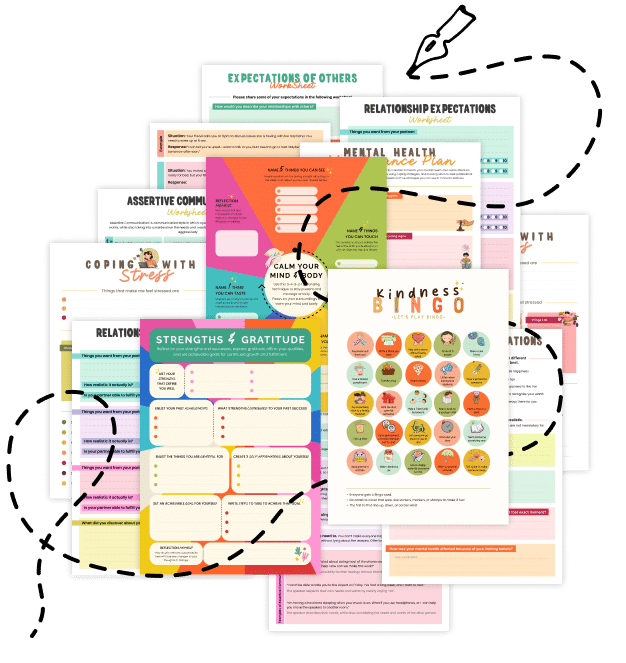20 Things You Should Know About Interleaving Practice
Boost your learning by mixing up study topics! Discover 20 essential insights on Interleaving Practice—how alternating between different subjects or skills can enhance retention, problem-solving, and overall academic performance.
1. What Is Interleaving Practice?
Interleaving Practice is a learning strategy where you alternate between different topics or types of problems during study sessions, instead of focusing on just one subject at a time.
2. How It Differs from Blocked Practice
Unlike blocked practice, where you study one type of problem or topic intensively, interleaving mixes them up, forcing your brain to continuously retrieve and apply different concepts.
3. Boosts Long-Term Retention
Research shows that interleaving helps build stronger, more durable memory traces, making it easier to recall information over the long term.
4. Enhances Problem-Solving Skills
By switching between topics, you train your brain to recognize patterns and connections across different areas, which can improve your problem-solving abilities.
5. Encourages Active Learning
Interleaving requires you to actively retrieve and apply multiple concepts, which engages higher-order thinking skills compared to passively reviewing one topic repeatedly.
6. Prevents Overconfidence
Sticking to one subject can sometimes create an illusion of mastery. Interleaving reveals gaps in your understanding by challenging you to switch contexts frequently.
7. Suitable for Various Disciplines
Whether you’re studying math, science, language, or even motor skills, interleaving can be applied to nearly every learning domain to improve performance.
8. Promotes Cognitive Flexibility
Alternating between different topics forces your brain to adapt, improving cognitive flexibility—an essential skill for transferring knowledge to new contexts.
9. Real-World Application
Athletes and musicians often use interleaving to practice different moves or pieces. This method helps them adapt quickly during performances or competitions.
10. Aligns with Spaced Repetition
Interleaving works well alongside spaced repetition. Spacing out diverse topics not only reinforces memory but also keeps your study sessions dynamic and engaging.
11. Reduces Mental Fatigue
While it may feel more challenging at first, interleaving prevents monotony and can keep your mind engaged, reducing the risk of mental fatigue during long study sessions.
12. Supports Transfer of Learning
By mixing topics, you enhance your ability to apply what you’ve learned in one area to solve problems in another, boosting the transfer of knowledge across subjects.
13. A Proven Research Strategy
Numerous studies have demonstrated the effectiveness of interleaving practice in both academic and real-world settings, making it a well-supported strategy in cognitive psychology.
14. Balancing Difficulty Levels
When designing your interleaved practice, ensure that topics or problems vary in difficulty. This balance helps you build confidence while still challenging your brain.
15. Use in Test Preparation
Interleaving is especially useful when preparing for exams. It forces you to recall information under varied conditions, which can better simulate the unpredictable nature of test questions.
16. Designing Your Study Sessions
Plan your study sessions to alternate between subjects or problem types. For example, if you’re studying math, mix algebra, geometry, and statistics problems rather than practicing one type for hours.
17. Technology Can Help
Digital tools and apps can automate interleaving by scheduling different types of practice questions or flashcards, ensuring you cover a range of topics systematically.
18. Overcoming Initial Discomfort
Interleaving can feel more challenging than blocked practice at first. Embrace the difficulty as a sign that you’re engaging your brain more deeply, which is key to long-term gains.
19. Monitoring Progress
Keep track of your performance across different topics. Noticing improvements and identifying areas that need more practice can help you fine-tune your interleaving strategy.
20. Related Topics to Explore
- Active Recall vs. Passive Review: Learn why actively retrieving information beats simply re-reading it.
- Spacing Effect: Discover how spacing out study sessions enhances memory retention.
- Cognitive Load Theory: Understand how balancing mental effort can optimize learning.
- Task Switching Costs: Explore how reducing frequent context shifts can improve focus.
Quick Tips for Implementing Interleaving Practice
- Mix It Up: Alternate between subjects or problem types during each study session.
- Plan Your Schedule: Organize your study time to cover multiple topics instead of focusing on one at a time.
- Use Digital Tools: Leverage apps that automatically interleave practice questions.
- Monitor Your Performance: Track which topics need more review and adjust your plan accordingly.
- Stay Consistent: Regular practice using interleaving builds stronger neural connections over time.
Interleaving Practice transforms the way you learn by mixing up topics and problem types, leading to deeper understanding, improved retention, and better problem-solving skills. While it may require a bit more effort initially, this approach helps your brain adapt and integrate information more effectively. Whether you’re a student, professional, or lifelong learner, incorporating interleaving into your study routine can pave the way for long-term success and intellectual agility.
Share this article with anyone looking to enhance their learning strategies. Embrace the power of interleaving, and watch your ability to recall and apply knowledge flourish over time!

